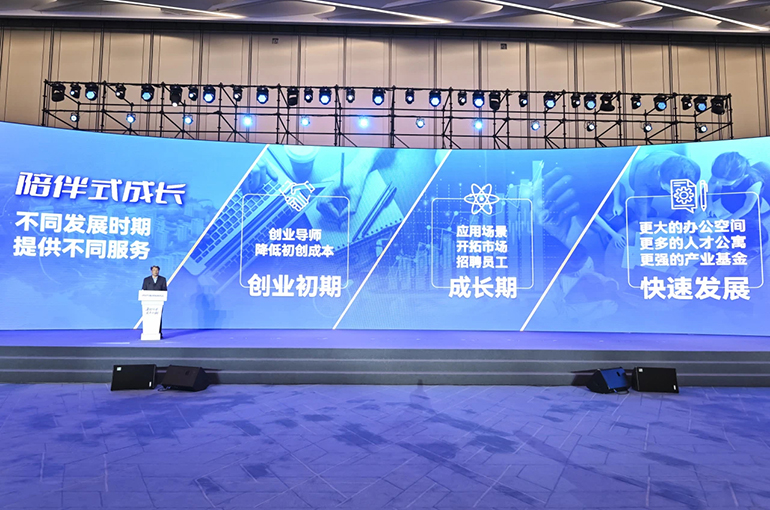Increase in China's Exports to US; China's Anti-Dumping Policies; Xiaomi Develops Its Own Mobile Chip; Apple and Alibaba's AI Partnership

Resurgence in China-US Trade
The temporary ceasefire on tariffs between China and the US has sparked notable shifts in trade operations. As reported by United Daily News, there has been a dramatic increase in exports to the US, with one logistics firm reporting a jump from 30 customs declarations daily to over 200 post-truce. This resurgence is a substantial indicator of global economic interdependencies, with the easing of tariffs benefiting both bilateral trade growth and broader global economic recovery.
Anti-Dumping Measures: China's Assertive Trade Stance
As reported by Tencent, China has enacted anti-dumping tariffs on specific imports from the U.S., EU, and Japan, illustrating its firm stance in response to trade frictions. This action underscores China's readiness to protect its domestic markets and industries from perceived unfair trading practices. The geopolitical overtones are clear, indicating China's willingness to assertively safeguard its economic interests against global pressures.
Chinese Yuan Appreciation: Caution and Outlook
The exchange rate dynamics between the Chinese yuan and the US dollar remain cautious terrain for market players, despite a slight yuan appreciation. According to Yicai Global, influences such as fluctuations in the US Dollar Index and speculative predictions by financial institutions like Goldman Sachs suggest complex underpinnings.
Market caution persists amidst the potential for further yuan strengthening if a stable trade agreement is reached. The reports indicate walking a tightrope of domestic economic considerations and international negotiations. However, the long-standing threshold for a currency appreciation remains tempered by broader economic indicators and uncertainties in US-China trade dialogues.
Mobile Chip Development by Xiaomi
Xiaomi's announcement of its self-developed SoC chip, utilizing 3nm technology, marks another leap in China's tech landscape. Sina reports that this development positions Xiaomi alongside major players like Apple and Samsung, underlining this progress as a landmark moment for China’s semiconductor industry.
The introduction of the "Xenji O1" chip demonstrates significant investment in local R&D and highlights a trend where Chinese tech giants strive to enhance autonomy concerning core technologies. This move is part of a broader industry commitment, despite earlier setbacks. It reflects on China's strategic focus on becoming a powerhouse in chip design and manufacturing.
Trade Discussions at the Forefront of APEC Talks
In another piece by the New York Times, U.S. Trade Representative plays a central role during the APEC meetings, illustrating the ongoing dialogue amidst trade tensions. Countries are keen on engaging in conversations that address tariff impacts and economic cooperation, demonstrating a collective interest in resolving trade disparities. The article reflects the continuous balancing act between protecting domestic industries and fostering international trade relationships.
Romania's Presidential Election and European Alliances
Xinhua reports on Romania's presidential election results, where independent candidate Dan takes the lead. This election outcome signifies Romania's growing alignment with the EU. The narrative emphasizes a tilt towards policies that resonate with the European Union, suggesting a regional trend where Eastern European countries may favor deeper integration with Western Europe over local or nationalistic agendas.
Shanghai's Lingang Area: A Hub for Tech Innovation
Yicai Global writes about the Lingang Special Area's strategic focus on nurturing tech startups within Shanghai. This development is part of China's broader strategy to become a global leader in technology and innovation. By investing significant resources into emerging companies, China aims to sustain its economic growth and secure its position in global markets. This move indicates a proactive approach to overcome potential technological embargoes by fostering self-reliance and domestic advancement in critical sectors.
Apple and Alibaba's Strategic AI Alliance
In an intriguing development, a recent article from the New York Times highlighted the burgeoning partnership between Apple and Alibaba in the field of artificial intelligence. This alliance, while promising advancements in AI development, has caught the attention of the U.S. government, prompting regulatory scrutiny.
What stands out about this partnership is the convergence of two major players from disparate tech ecosystems—Apple, a symbol of American innovation, and Alibaba, a titan of China's digital economy. The collaboration aims to leverage AI to enhance product offerings and streamline manufacturing processes. This move aligns with Apple's focus on integrating cutting-edge technology to maintain its competitive edge.
However, the partnership is not just about technology. It's a geopolitical dance. The New York Times notes that such collaborations can fuel government concerns about technological dependencies and data privacy, especially in light of current U.S.-China relations. The publication's narrative hints at an underlying tension between fostering innovation and safeguarding national interests. Mickle's reporting, often centered on tech trends and political challenges, suggests a delicate balance companies must maintain in the global tech arena.
The Broader Impact on Global AI Dynamics
This story offers a microcosm of the wider implications such international tech partnerships have on the global stage. By forging an alliance, Apple and Alibaba not only seek mutual growth but also set a precedent for cross-border tech collaborations amid political tensions. Such moves could pave the way for other tech giants to navigate similar pathways, balancing innovation with geopolitical realities.
This development prompts a crucial question: How far can U.S. and Chinese companies collaborate without crossing lines that trigger governmental pushbacks? The scrutiny mentioned by the New York Times reveals an ongoing tug-of-war between exploiting technological potential and adhering to national security imperatives.
As companies like Apple and Alibaba push the frontiers of AI, they are also shaping the landscape of international trade and technological diplomacy. Their partnership underscores the potential of AI to act as both a bridge and a barrier, depending on how these innovations are perceived and regulated across different jurisdictions.
The New York Times' reporting illuminates these complexities, advocating for readers to consider not just the technological advancements but also the broad societal impacts of such moves. These partnerships may herald a new era of global AI development, where cross-cultural tech collaborations become integral to navigating an interconnected yet politically complex world.



